What diameter should my handrail be? Handrails and sizes explained
Posted on 20th February 2023Handrails can come in all shapes and sizes from many different suppliers. Ensuring they are compliant for ease of use is of course key, but there are also other considerations.
h
What size should your handrails be?
h
There isn’t a simple response because ultimately, it depends on the application. From the perspective of compliance, the guidance materials and building standards largely convey a consistent message.
When determining handrail suitability, there are two main methods of measure:
1. Cross sectional measurements
2. Dimensions of the ring
h
Guidance and Building Regulations
Part M and Part K of the guidance documents only mention the cross section dimensions:
- If circular, between 32-50mm in diameter
- If oval, 50mm wide and 39mm deep with a radius of at least 15 mm
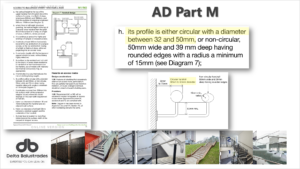
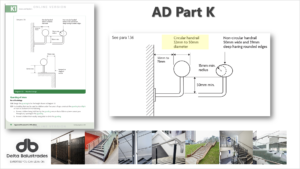
h
Contrarily, BS 8300 and BS 5395 both mention the same cross section measurements along with:
- The external perimeter being between 100 and 160mm to offer a power grip around the handrail.
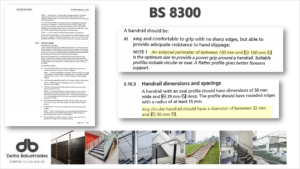
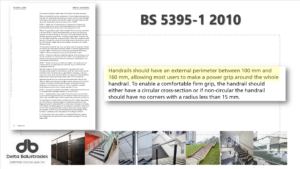
h
This pretty much equates to the same thing.
There is a fairly consistent message about the minimum being 32 millimetres and the maximum being 50 millimetres for most of the UK. However, there is a little inconsistency in the “Part M” guidance where it suggests a maximum of 45 millimetres in Wales but 50 millimetres for the rest of the UK.
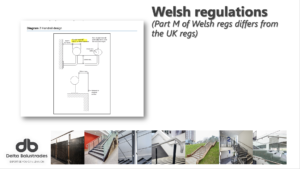
h
Additional Considerations
There are other factors to take into account in addition to the rules, considerations like:
- Loadings
- Aesthetics & Usability
When it comes to loading, standard 50mm handrail tubes often withstand larger loads than smaller 42mm tubes, allowing for a better, wider, and more cost-effective distribution of posts, especially when the weight is increased to 1.5 or even 3kNm.
Then we’ll talk about appearance and usability. Everyone is aware that the user perception of the handrail is very important.
Giving users a sense of stability inspires trust in those who are depending on them for support and direction, and this is frequently best accomplished through visual, and design consistency.
Whatever name you give them, balusters, legs, or posts, these are normally 48mm in diameter, or even 60mm for heavier loads.
It can start to look a little out of proportion if the baluster looks thinner in comparison, so we would recommend a 48mm handrail to maintain aesthetic consistency.
On the contrary, where handrails are included in schools, some clients favour the smaller handrails since they may be more suitable for the smaller hands of the children.
h
Final Remarks – Our Recommendations
In conclusion, our recommendation is to use the largest handrail size possible to ensure compliance with loading requirements and aesthetic consistency. If a smaller handrail is necessary for a particular situation, avoid specifying any less than 42mm in diameter as it can be difficult for a design to meet the loadings that balustrades are required to take.

